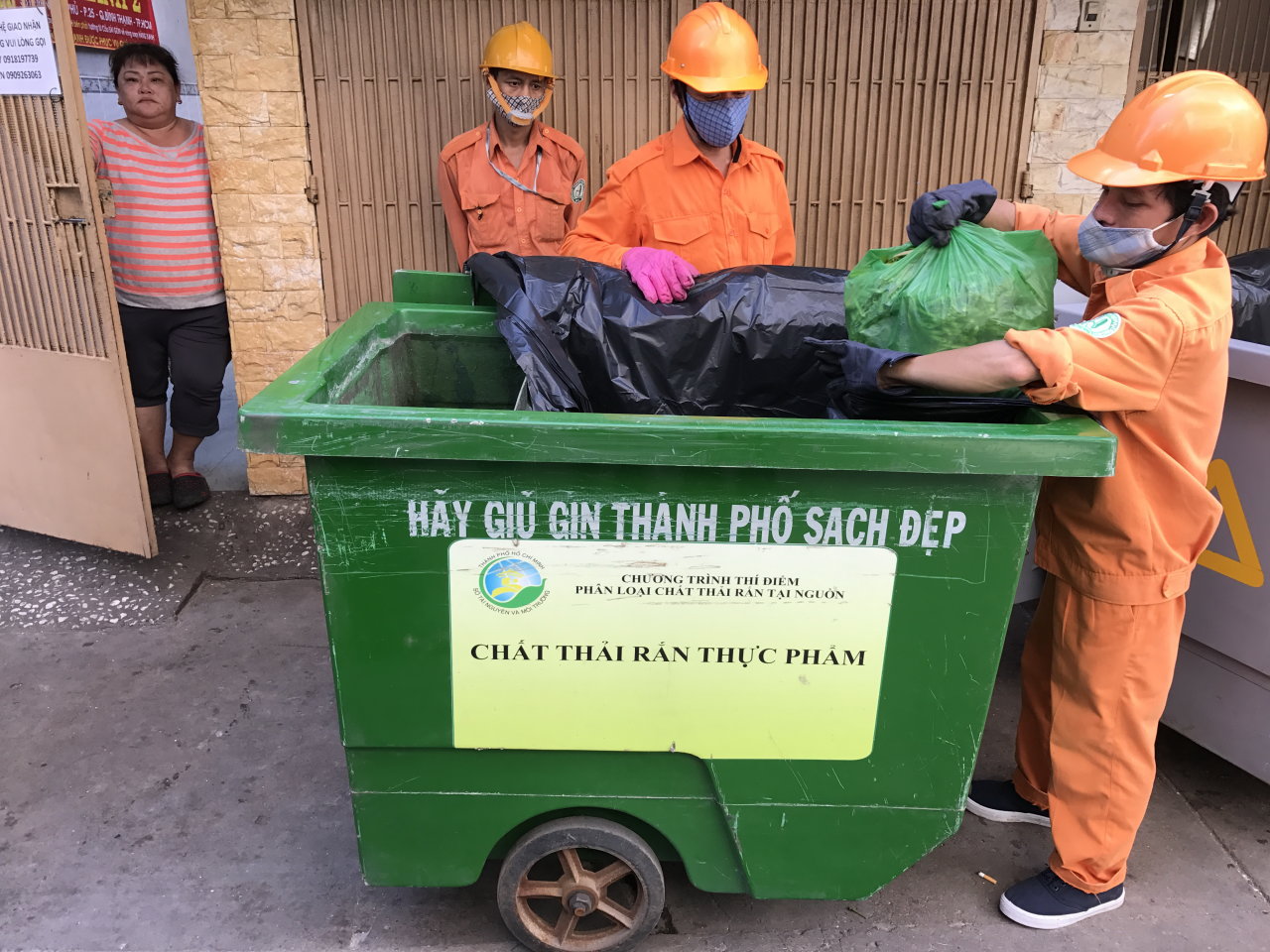Authorities in Ho Chi Minh City are desperately seeking an environmentally friendly garbage treatment measure to replace its current practice of burying waste.
The southern city has set a goal of reducing the percentage of buried trash to 50 percent by 2020,requiring the metropolis to incorporate new technology into its waste management practices.
Residents across the southern hub produce some 8,300 metric tons of garbage per day, 76 percent of which is buried underground at local treatment plants.
Currently, only two plants, one operated by Vietstar Corporation and the other by Tam Sinh Nghia JSC, are capable of recycling rubbish at the combined capacity of 2,500 metric tons a day.
Alternate waste treatment methods are currently undergoing testing phases in Ho Chi Minh City.
Among them, a model to transfer waste into electricity has been piloted at the Go Cat landfill in Binh Tan District over the past three months.
Initial results show that the model can turn 10 metric tons of trash into 7,000 kilowatt-hours on a daily basis.
According to Nguyen Gia Long, director of the Thuy luc-May (hydraulic and machinery) Company, a co-developer on the project, the technology can use both industrial and household garbage as input resources.
A plant using similar methods has been operating in the northern province of Ha Nam with positive outcomes as well, Long said, adding that the factory’s capacity is expected to be raised to 1,000 metric tons of rubbish a day – the equivalent of 20 megawatts of electricity.
Another waste-to-energy solution has been in testing at the Phuoc Hiep Solid Waste treatment zone in Cu Chi District since October 2016, thought it requires organic household garbage as an input which thereby creates the challenge of introducing waste classification to the city.
The municipal People’s Committee has also approved the application of plasma technology in waste treatment.
The project costs up to US$520 million and is being developed by Australia’s Trisun Green Energy Corporation. It aims to process an estimated 3,000 metric tons of garbage per day at the Phuoc Hiep facility.
According to Dr. Pham Viet Thuan, a member of the Institute of Economics and Environmental Resources, these new waste treatment models are becoming a global trend.
However, a successful approach to better waste management requires the classification of garbage at the source, Thuan stated, adding that household trash in Ho Chi Minh City and other localities are often mixed with industrial waste, posing potential problems.
The 2020 goal is an ambitious one, considering many of the projects include long-term implementation.
Improving the classification process will help expedite the new treatment procedures when the infrastructure is completed, the expert elaborated.
Like us on Facebook or follow us on Twitter to get the latest news about Vietnam!



















































